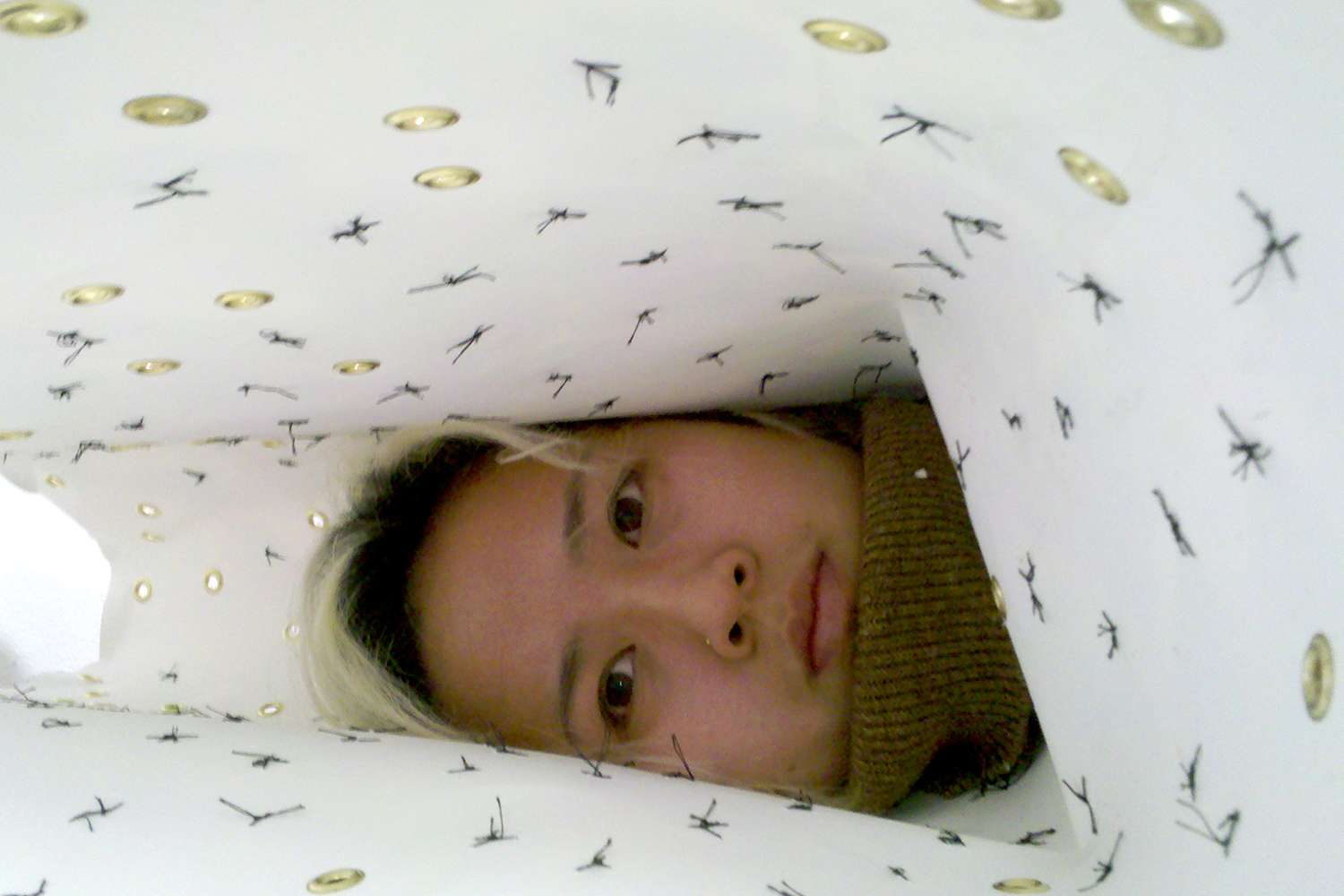
The excerpt below is taken from a conversation between Charlie Xie of ArtZealous and Kim Ye.
Click here to experience the entire text with images in its original format.
Kim Ye is an LA-based artist with frankly an astounding volume of work. Ranging from sculpture to videos, paintings to live performances – she pushes at the boundaries of what is “art,” exploring those lines between “performance art” and simply “performance.” Where are the lines drawn between “live art” and “spectacle,” what is the relationship between the artist and audience, or the performer and viewer? What modes of exchange are acceptable in these relationships, and at which scale do they take place? Who holds the power – is there power in letting go of control? These are all questions Kim Ye addresses in her works, whether through latex molds or shared live experiences. Following her recent participation in Mutant Salon’s Festival De Las Muertas at the Hammer Museum, we catch up with Kim Ye to reflect on her artistic practice so far and what she plans to tackle next. This interview is a direct dive into some of the deepest questions at the core of Kim Ye’s work, so familiarize yourselves… and step on in.
Art Zealous: Is there something intrinsic to latex that satisfies you, as opposed to other materials capable of casting? Is it something visceral? How it can conform to both soft bodies and hard forms – but the result is something very pliable and… stretchy?
KY: Liquid latex conforms to the surface it is slathered upon, acting as a perfect mirror, but without a form of its own. Different than a solid mold-making material like plaster, the latex mold’s flexibility and reversibility is what captures me. That each crease, crevasse, bump, and nodule of the original object can be captured and inverted to create a new object that is both opposite and adjacent to its source has a profundity that is difficult for me to articulate with words. The new thing is a ghost, an imitation, and dependent on its parent object, but it is undoubtedly its own thing. I think about assimilation (of immigrants into new societies and of individuals into institutions), inheritance (from family, from generations), and projection/introjection (of qualities, of needs, of deficiencies) in terms of the way it functions as a reproductive process that is at once as suffocating as it is generative.
If you’re talking about vulcanized latex though, it’s something different. This is the smooth latex fabric that fetish clothing, catsuits, and sensory deprivation hoods are made of. In this case, the material is like the casing of a sausage – compacting a body’s meat into impossibly smooth contours. I only started working with this type of latex sheeting a couple years ago. Because it’s a material that requires a lot of precision to manipulate, it speaks much more to the fetishism of things than its liquid cousin. Mainly used to clothe the body, vulcanized latex is cut apart and pasted together – not slathered on an object. Thus I use this type of material to become intimate with graphics, whereas the liquid latex is used to becoming intimate with bodies and objects. (see Vicki’s as an example of a work made with this material)
Art Zealous: Much of your work is very performative, be it videos or live performances or sculptural pieces. How, then, do you position your latex paintings?
KY: The concept of performativity, of making ourselves socially intelligible through our actions and thus creating an identity in the eyes of others, is something that I explore repeatedly through my practice. Every subject is an object to someone else, so how do others’ experience of us, of me, as an object have a direct impact on my conception of the nature of the world? I think about the pros and cons of conformity, the privileges bestowed upon those who successfully embody the codes of the world around us, the vulnerability of those who depart (either willingly or forcibly) from the traditions and are then read as non-intelligible (queer), and how the feedback loop that results from interpersonal interactions is complicated and fragments reality. Like a beam of light hitting a gem, the different facets of one’s created identity splits the single vector into an array of possibility.
The pieces you mention above act as a window or portal – allowing the viewer to follow one of the split beams to where it hits the wall. The pieces from the FemDom POV, and Chinese Dream series throw into relief direct experiences from very specific, perhaps conflicting, positions. The images I choose to translate into this medium are from photographs taken candidly from daily life. As flat pieces, they are created in reverse with the top layer being applied first, often with rudimentary tools like chip brushes and ketchup bottles. These clumsy implements and the layering process abstracts the image for those unfamiliar with the subject matter, creating an in-group (or sort of hanky code or beacon) for those who usually find themselves outside or operating undercover in the mainstream…